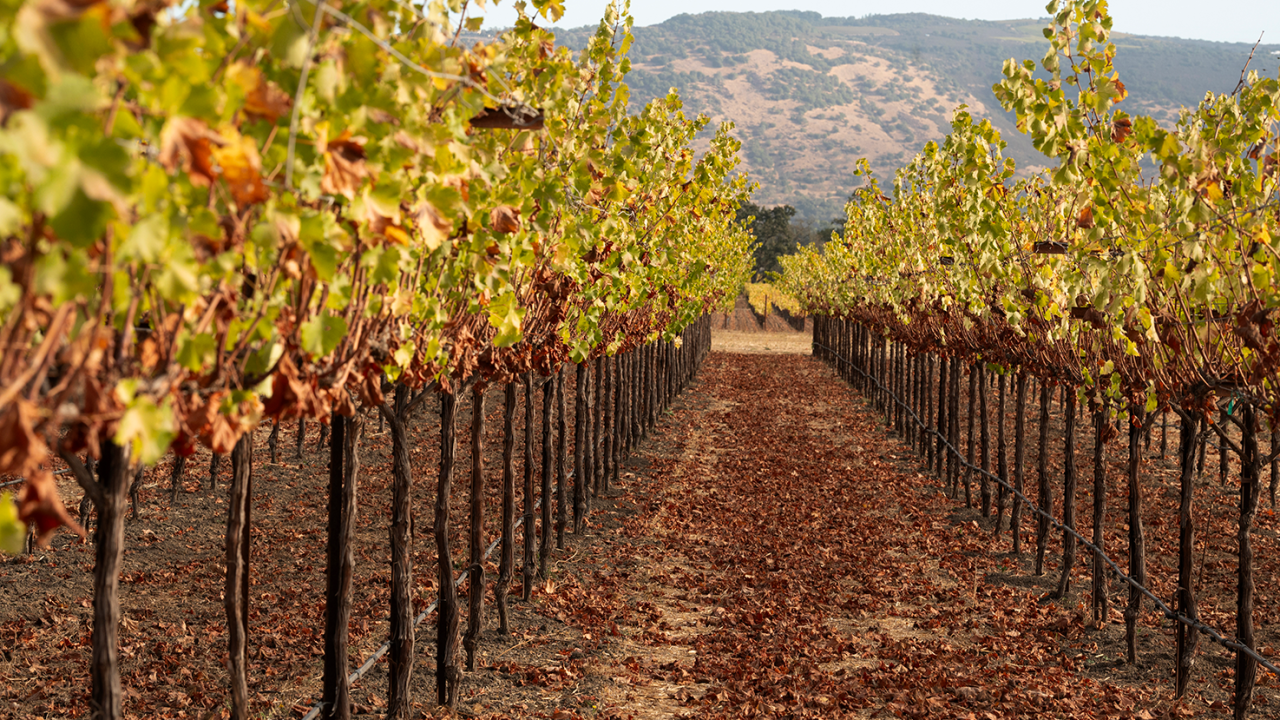
Oakville Station: UC Davis Research Station in Heart of Napa
Nestled among the rolling hills of Napa Valley and surrounded by award-winning wineries like Opus One and Robert Mondavi lies a gem of the research and winemaking world: Oakville Station.
Overseen by the Department of Viticulture and Enology at University of California, Davis, the 40-acres of land is home to a lab, research facility and two vineyards producing sauvignon blanc, cabernet sauvignon, cabernet franc and other grapes.
“There’s likely nowhere else in the world where a university has vineyards on such premium land,” said Guillermo Garcia Zamora, the vineyard manager at Oakville Station since 2020. “We’re making wine and farming in one of the best places in the world. We are very fortunate to have these vineyards.”
In 1954, the U.S. Department of Agriculture turned over 20-acres of land to UC Davis. The acreage dates to the 1880s when the area was farmed by Hiram Crabb, a pioneer of the Napa wine region, and the California Viticulture Commissioners. The other 20-acre parcel was a gift from Napa Valley vintners, including John Daniel Jr. of Inglenook.

Production quality
Oakville Station, which grows more than 120 tons of grapes annually, operates as a production vineyard but with a research and education twist.
“This represents some of the best fruit that you’re going to make wine with in California,” said Ben Montpetit, chair of the Department of Viticulture and Enology. “We’re growing and farming grapes to the highest qualities that we can within the confines of what we do as a research institution.”
The vineyard grows and harvests grapes for use in winery classes, research projects and wine production. It also faces the same issues and challenges experienced by the industry, from fires and pests to temperature swings and sunburning.
Fires whipped around the region just two weeks into Garcia Zamora’s tenure at Oakville Station. Masked harvesters had to hustle to get grapes off the vine before the worst of the smoke in the hills threated to affect the flavor and health of the grapevines.
“We harvested all the grapes the day the fire department blocked off the road,” he said.
Fortunately, Oakville Station was not damaged by the fires in 2020, but other valley wineries were destroyed.

Real-time research
The research is aimed at addressing quality, yield, disease, water use, and sustainability in the context of climate change, which includes the impact of smoke from fires.
Vines are grown on five types of trellis designs or canopies, including one that is split with grapevines growing in a V-shape.
“We have perfect light on both sides, and we can double the yield, which could be great for white grapes,” Garcia Zamora said of that configuration.
A block with no irrigation lines is home to grapes grown using only the water that roots take up from the soil. “In dry farm blocks it’s just mother nature,” he said. “It’s amazing how they perform.”
The vines grow in rows with varying rootstocks, spacing and crop covers. In one area, sensors are placed at five different depths to monitor soil moisture depletion and sensors in the trunks track vine stress around the clock. Some rows have different orientations to see if that can prevent grapes from getting burned by the sun, a change that could become an industry norm.
“Climate change is not affecting only Napa Valley,” he said. “It is affecting the entire world. We need to be prepared to tackle that new scenario.”
New and old technologies are used side by side. A weather station maintained by the state on the property provides continual updates on conditions. And windmills operate during the spring – when frost temperatures can kill shoots and young fruit clusters – and are used to mix the hotter air from 20 feet above the field with the cooler temps.
“We keep them running until the sun heats the air,” Garcia Zamora said. “It protects the vineyards.”
Sustainability and partnerships
Oakville Station produces more grapes than it needs for teaching, research and wine production. Rather than let grapes go to waste, UC Davis sells the remaining fruit to winemakers and the majority are alumni.
“There’s a lot of reasons why this fruit should not go to waste,” Montpetit said. “It’s providing opportunities to engage and partner with our alumni and fuel their success and be a part of their success.”
Alum Stuart Spoto, who is winemaker and owner of Spoto Family Wines, has been buying Oakville Station grapes since he started operations in the early 2000s.
“I experimented for many years trying other vineyards’ fruit and such, but, as with anything, you kind of gravitate to the best fruit and honestly that is the best fruit,” Spoto said. “I think it’s a wonderful relationship to be able to work with my alma mater and buy fruit from one of the best vineyards in the Napa Valley.”
Media Resources
- Ben Montpetit, Department of Viticulture and Enology, benmontpetit@ucdavis.edu
- Guillermo Garcia Zamora, Oakville Station, ggarciaz@ucdavis.edu
- Emily C. Dooley, College of Agricultural and Environmental Sciences, ecdooley@ucdavis.edu